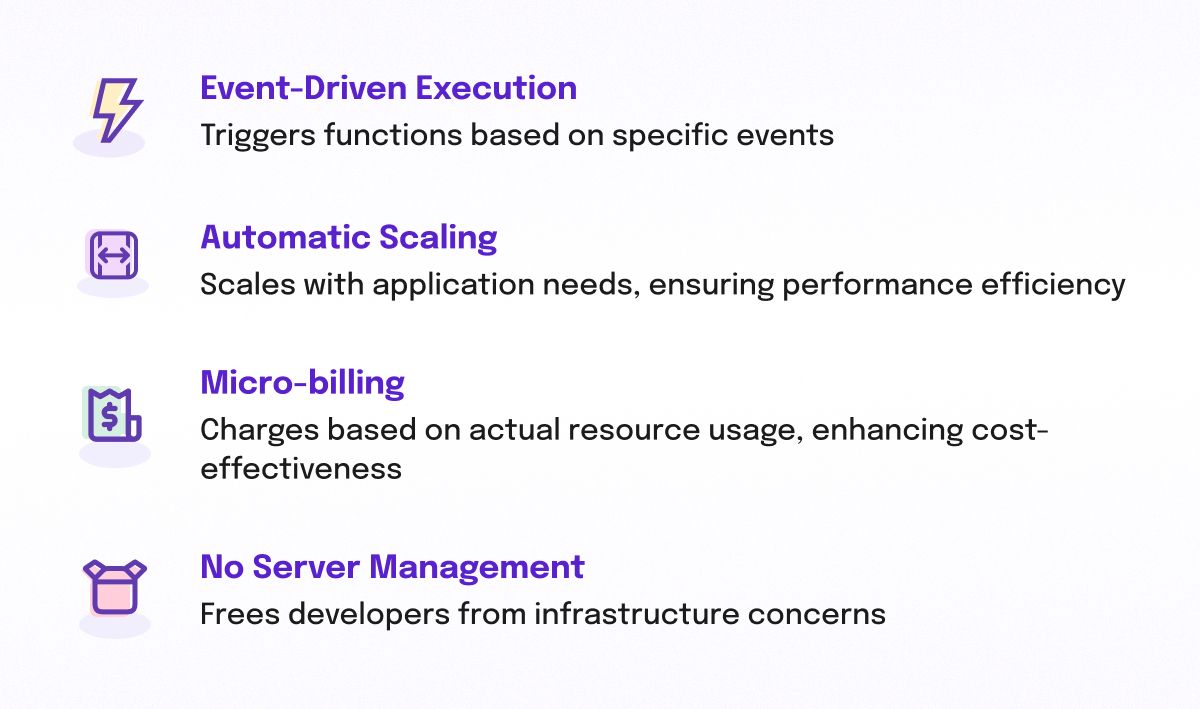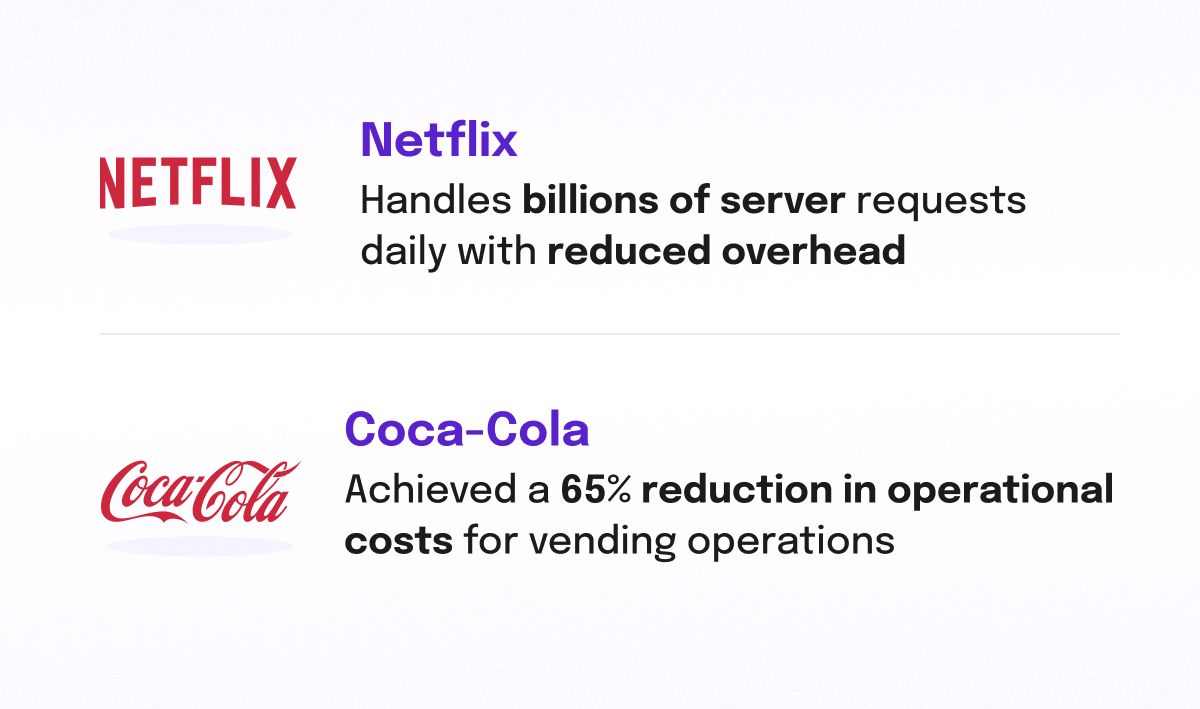The landscape of application development has undergone a radical transformation with the advent of serverless architecture. This innovative approach has redefined how applications are built, deployed, and managed, offering unparalleled efficiency and scalability. In this article we provide an in-depth look at serverless architecture, underlining its significance in modern application development with interesting facts, statistics, future insights, and real-world examples.

Understanding Serverless Architecture
Serverless architecture, often referred to as Function as a Service (FaaS), allows developers to build and run applications and services without the complexity of managing infrastructure. The name 'serverless' is somewhat misleading as servers are still involved, but the management of these servers is handled by the cloud provider.
Core Features of Serverless Architecture:
-
Event-Driven Execution: Serverless functions are triggered by specific events, such as an HTTP request, a new file upload, or a scheduled task.
-
Automatic Scaling: The architecture scales automatically with the application's needs, ensuring optimal performance even under varying loads.
-
Micro-billing: With serverless, you pay only for the resources you consume, down to the function execution level, making it a cost-effective solution.
-
No Server Management: Developers are freed from the burden of server management, enabling them to focus solely on writing code.

The Impact on Development:
- Rapid Deployment and Updates: Serverless architecture facilitates quicker deployment and updates, significantly shortening the development cycle.
- Enhanced Scalability: Applications can effortlessly scale to handle an increase in demand, without any manual intervention.
- Reduced Costs: Elimination of the need to manage infrastructure leads to significant cost savings.
Statistical Insights:
- A report by MarketsandMarkets predicts the serverless architecture market size to grow from $7.6 billion in 2020 to $21.1 billion by 2025.
- According to a Datadog study, half of AWS users are employing AWS Lambda, a popular serverless service.
Real-World Success Stories
Netflix’s Serverless Journey:
Netflix, a leader in streaming services, adopted serverless architecture to handle its enormous and fluctuating user base. This shift allowed Netflix to manage billions of server requests daily, significantly reducing server management overhead.
Coca-Cola’s Cost-Effective Transition:
Coca-Cola leveraged serverless technology to optimize its vending machine operations. This move reduced operational costs by 65%, showcasing the cost-effectiveness of serverless solutions.

The Future of Serverless: Trends and Predictions
The future of serverless architecture in application development is bright, with several emerging trends:
-
AI and Machine Learning Integration: Serverless architecture is becoming increasingly compatible with AI and machine learning models, enabling more intelligent and responsive applications.
-
IoT and Serverless Convergence: The growth of IoT devices is likely to drive more serverless architecture adoption, as it offers an efficient way to process data generated by these devices.
-
Hybrid Architectures: A mix of serverless with traditional server-based architectures is expected to become more prevalent, providing flexibility and robustness in application development.
-
Increased Enterprise Adoption: More large-scale enterprises are expected to transition to serverless architectures for their efficiency and scalability benefits.
Challenges and Considerations
Despite its numerous advantages, serverless architecture isn’t without challenges:
-
Cold Start Problem: The initial startup latency, known as a cold start, can be an issue, especially in systems requiring instant response.
-
Limited Control: Since the infrastructure is entirely managed by the cloud provider, there’s less control over the environment.
-
Security Concerns: The shared responsibility model in serverless architecture requires a clear understanding of what security aspects are managed by the provider and what falls under the user’s purview.
Conclusion
Serverless architecture marks a significant step forward in modern application development, offering scalability, cost efficiency, and the ability to focus on coding rather than server management. Its growing adoption is testament to its effectiveness in handling today's dynamic application demands.
In conclusion, as technology continues to evolve, serverless architecture is not just a passing trend but a fundamental shift in how applications are developed and managed. It empowers developers to build more efficient, scalable, and cost-effective applications, positioning it as a crucial component in the future of application development. For businesses looking to stay competitive and agile in the digital era, embracing serverless architecture is an increasingly important strategic decision.